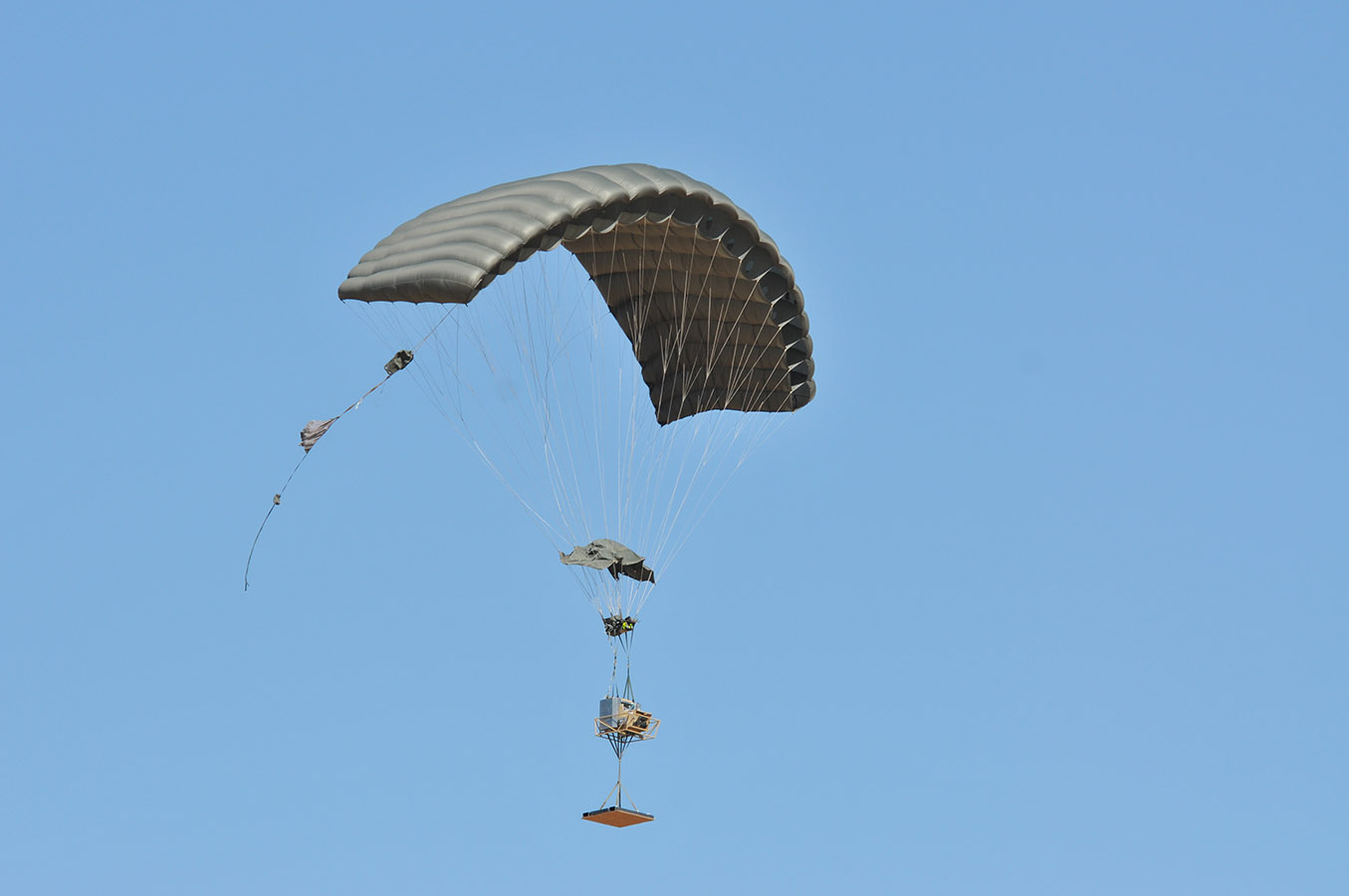
Stay Up to Date
Submit your email address to receive the latest industry and Aerospace America news.

The Aerodynamic Decelerator Systems Technical Committee focuses on development and application of aerodynamic decelerator systems and lifting parachutes, pararotators and inflatables for deceleration, sustentation and landing of manned and unmanned vehicles.
In February, the U.S. Army Combat Capabilities Development Command, Soldier Center, known as DEVCOM SC, tested the Product Manager Force Sustainment System’s RRDAS, or Rapid Rigging and De-rigging Airdrop System. To demonstrate how this parachute system can quickly get supplies to soldiers, it airdropped and automatically derigged a Small Multipurpose Equipment Transport vehicle at Yuma Proving Ground in Arizona. These built on the low-velocity operational testing completed at Fort Liberty in North Carolina in December 2023. This time, test engineers were able to access the airdropped vehicle up to 40% faster than current operations.
DEVCOM SC also continued to add power and range to existing aerial delivery systems. Working with other government organizations, including U.S. Transportation Command and the Office for the Under Secretary of Defense Operational Energy’s Innovation Directorate, the center and industry partners conducted a series of tests in Arizona in March, July and August with a JPADS 2K, a variant of the Long-Range Joint Precision Aerial Delivery System. They added an internal combustion engine and propeller to the steerable parachute to generate enough lift to maintain flight altitude until onboard fuel was consumed, providing an order of magnitude increase in system range. In March and August, drop tests were performed in California with the Precision Extended Glide Airdrop System. For these, paraglider wings were released from fixed-wing aircraft to increase the range of aerial delivery systems and demonstrate how payloads could be ferried to far-away drop zones. DEVCOM SC anticipates conducting additional demonstrations of these technologies next year to mature the technology readiness.
Beyond physical tests, DEVCOM SC modeling and simulation efforts have helped optimize payload system dynamics for RRDAS, risk and stability assessments for towed paratrooper scenarios and helicopter/parachute sling-load operations. In June, RRDAS development simulations were completed to establish a baseline airbag model that could be repeatedly used for predictions using various vehicle or payload types and airbag vent configurations. The post-test analysis showed the impact accelerations correlated with the peak accelerations closely, with a few exceptions. Results from towed paratrooper simulations, initiated in July, led to the identification of key performance parameters for qualifying the T-11 parachute system for use aboard the Airbus A400M turboprop, supporting interoperability with allied countries.
With respect to sling-load operations, several new leading-edge designs for prismatic bodies were shown to reduce drag by more than 50%, while other configurations yielded a 60% decrease in pitching moment magnitude. These simulations, completed in January and February, led to a series of refined wind tunnel experiments conducted from early April to late July. The resulting drag and stability improvements have potential applications across multiple U.S. Army projects.
In July, University of Southern California researchers with Butler Parachute Systems of Virginia completed initial high-fidelity fluid-structure interaction simulations, as part of a study of the high-speed canopy slider used on the HX-500/24 parachute. Initial results showed that peak forces were reduced by more than half when using the novel sombrero-shaped dynamic slider.
At NASA’s Ames Research Center in California, researchers with the Advanced Supercomputing Division also completed high-fidelity fluid-structure simulations. Their work focused on the highly nonlinear inflation of a parachute in a supersonic deployment configuration, as will be required for NASA’s Mars Sample Return spacecraft, DaVinci Venus probe and Dragonfly quadcopter. While researchers did not find parachute drag to be greatly affected by canopy porosity and viscous effects, they were able to increase drag by 20% by adding stiffness to the radial seams.
Stay Up to Date
Submit your email address to receive the latest industry and Aerospace America news.



